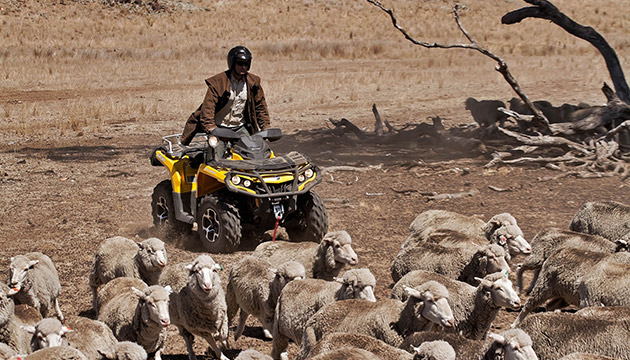Whether you’re working or playing, the Can-Am Outlander has all the goods.
Story By Ian Glover
In terms of vehicles, there aren’t too many that can combine the drudgery of work and sheer unadulterated fun. Four-wheel-drive utes with canopies – a weekday workhorse and weekend warrior for tradies – sure, but after that the list starts to look pretty dismal. Sports cars: great to get the adrenalin firing, not so hot in the paddocks. Tractors: indispensible on any farm, but not exactly the vehicle you’d want to enter in the Paris-Dakar.
Enter the Can-Am Outlander quad bike. It’s made by Bombardier Recreational Products (BRP), a Canadian company that dates back to 1937 when Joseph-Armand Bombardier obtained the first patent for a tracked over-snow vehicle, later named the B7 Snowmobile. The Outlander has been designed with the person on the land firmly in mind. An initial giveaway is the 12-volt power outlet – just the thing for a sprayer – but there are other indicators, like a towing capacity of 500 kilograms with a proper Hayman Reese towbar assembly. The front rack is capable of carrying 45kg, the rear 90kg, with plenty of sturdy tie-down points. Another great feature for agricultural use is selectable Dynamic Power Steering. When you’re cruising through paddocks or doing a bit of mustering, the normal setting provides a crisp, predictable response to steering inputs but if you’re, say, slowly picking your way through a lumpy creek bed and don’t require – in fact, don’t want – the same precision, just change the setting.
There’s no doubt the Outlander is a stylish piece of kit, but it’s style complemented by substance. At the heart of it all is a 500-cubic-centimetre unleaded V-twin made by Austrian company Rotax. This company has been around even longer than Bombardier. It was founded in 1920 and is probably most famous for its ultralight and light-aircraft engines. Using electronic fuel injection and redlined at 8000rpm, it’s a very free-revving engine, working through a continuously variable transmission (CVT). Found in many vehicles including snowmobiles, bikes and some cars, a CVT differs from manual and automatic transmissions in that it has no fixed gear ratios, instead moving seamlessly through an almost infinite number of ratios with maximum and minimum values, often offering great advantages in fuel economy. High and low ranges (easily selected via a slotted gate that also provides for forward, reverse and park functions) are fixed, however. For safety reasons reverse is rev-limited, but there’s an override switch for those times when you’re in a yard with some fractious steers and suddenly have to get out in a hurry!
This story excerpt is from Issue #89
Outback Magazine: June/July 2013










